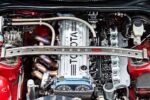Dodge Durango Engine Problems: A Closer Look
A Brief History of the Dodge Durango
The Dodge Durango made its debut in 1998 as a mid-size SUV, designed to cater to families and adventure seekers alike. Built on the same platform as the Dodge Dakota pickup truck, the Durango was initially praised for its robust build and spacious interior. Over the years, it has undergone several redesigns, with the most significant updates occurring in 2004, 2011, and 2021. Each iteration aimed to enhance performance, comfort, and technology, making the Durango a competitive player in the SUV market.
However, with its evolution, the Durango has not been without its share of engine-related issues. While many owners appreciate the vehicle’s towing capacity and off-road capabilities, numerous reports have surfaced regarding engine performance problems that can lead to significant frustration and financial burden. From early models to the latest versions, engine troubles have plagued many Durango owners, raising concerns about reliability and long-term ownership costs.
As the Durango continues to attract attention for its powerful engine options, including V6 and V8 variants, it is essential to address the common engine problems that have been reported. Understanding these issues can help potential buyers make informed decisions and current owners take proactive measures to mitigate risks. This article delves into the various engine problems associated with the Dodge Durango, providing a straightforward overview of what to expect and how to handle these challenges.
Dodge Durango Engine Problems: Common Issues and Their Impact
Engine Failure and Overheating
One of the most significant concerns for Dodge Durango owners is engine failure, often accompanied by overheating. This problem can arise from various factors, including:
- Coolant leaks
- Faulty water pumps
- Clogged radiators
- Defective thermostats
When these components fail, it can lead to severe engine damage, resulting in costly repairs or even complete engine replacement. Regular maintenance and monitoring of coolant levels can help mitigate these risks.
Oil Consumption Issues
Another prevalent issue reported by Durango owners is excessive oil consumption. This problem is particularly common in models equipped with the 5.7L HEMI V8 engine. Symptoms of oil consumption include:
- Frequent oil changes
- Oil spots under the vehicle
- Increased exhaust smoke
If left unaddressed, excessive oil consumption can lead to engine wear and tear, ultimately resulting in engine failure.
Transmission Problems
While not strictly an engine issue, transmission problems often go hand-in-hand with engine performance issues. Owners have reported:
- Slipping gears
- Delayed shifting
- Unusual noises during operation
These symptoms can indicate underlying engine problems, such as inadequate power delivery or engine misfires, which can further exacerbate transmission issues.
Table of Common Engine Problems
| Engine Problem | Symptoms | Potential Consequences |
|---|---|---|
| Engine Failure | Overheating, warning lights | Complete engine replacement |
| Oil Consumption | Frequent oil changes, smoke | Engine wear, potential failure |
| Transmission Issues | Slipping, delayed shifting | Increased repair costs |
Electrical System Failures
Electrical problems can also impact engine performance in the Dodge Durango. Common issues include:
- Faulty sensors (e.g., oxygen sensors)
- Battery failures
- Alternator issues
These electrical failures can lead to poor fuel efficiency, rough idling, and even stalling, which can be dangerous while driving.
Conclusion
In summary, the Dodge Durango is a capable SUV, but it is not without its engine problems. Owners should be vigilant in monitoring their vehicles for signs of trouble. Addressing issues early can help prevent more severe consequences down the line.
Table of Symptoms and Consequences
| Symptom | Potential Consequence |
|---|---|
| Overheating | Engine failure |
| Excessive oil consumption | Engine wear and potential failure |
| Slipping transmission | Increased repair costs |
| Electrical failures | Poor performance and safety risks |




0 Comments